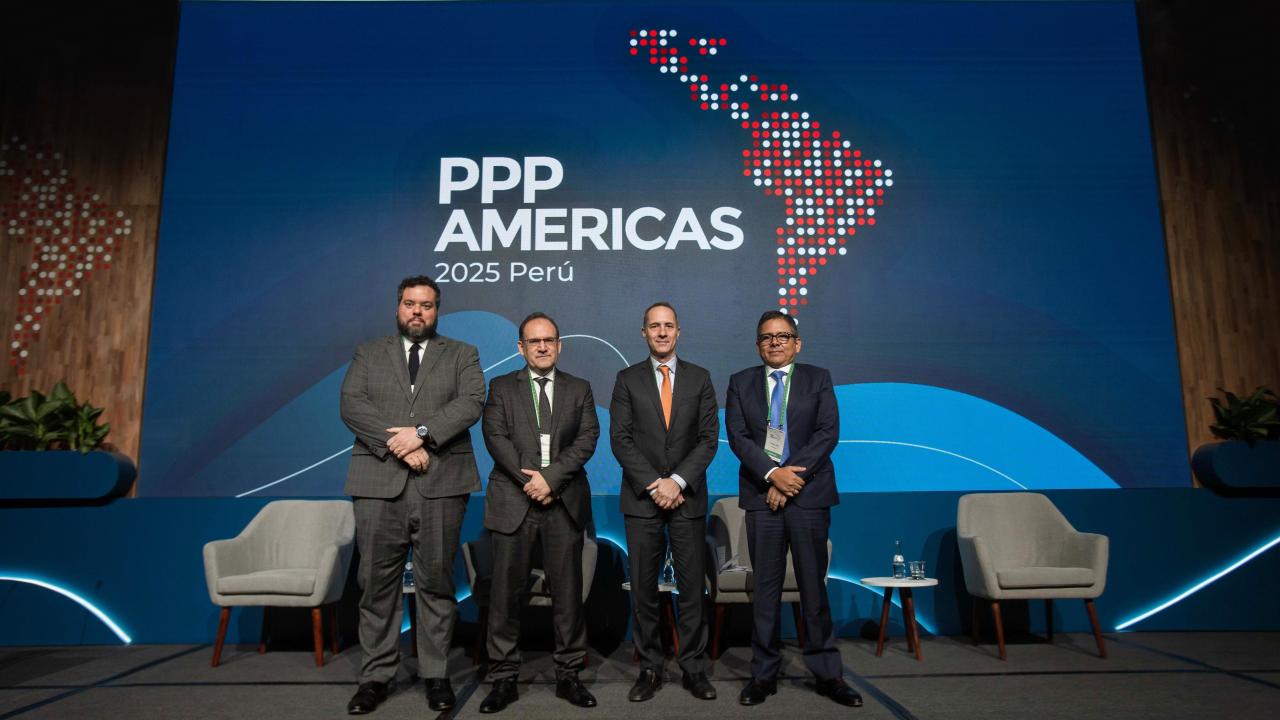
The Andean country is committed to boosting private investment in the expansion of energy and transportation networks; however, the IDB recommends that this wave extend to other sectors such as education.
At the opening of the twelfth edition of the PPP Americas Forum in Lima, Peru, Luis Del Carpio, Executive Director of ProInversión, highlighted how Peru currently has more than 100 PPP projects in its portfolio, valued at US$70 billion over the coming years. The planned projects address the electricity, transportation, and sanitation sectors, and to a lesser extent, education and tourism. Some of the most important projects include Lines 3 and 4 of the Lima Metro, ten cable cars, and the Matarani port terminal in Arequipa.
“PPPs drive development: they serve to close the infrastructure gap and constitute an important mechanism for doing business between the public and private sectors,” said Del Carpio at the event organized by the Inter-American Development Bank (IDB) as a space for representatives from the public and private sectors to meet and discuss challenges, opportunities, and the latest trends in Public-Private Partnership (PPP) projects.
Meanwhile, Tomás Lopes-Teixeira, IDB representative in Peru, revealed the regional application of "Infrascope," a tool developed by the Bank that measures countries' capacity to develop PPPs.
In the specific case of Peru, the Andean country is among the top five in Latin America with notable figures. For example, PPP projects in Peru total more than US$10 billion in transportation; US$1.4 billion in renewable energy; and US$800 million in sanitation. Lopes-Teixeira, however, isn't unrealistic.
"We know that the needs remain significant, both in quantitative terms, with an estimated annual investment of more than US$110 billion required to close infrastructure gaps, and in qualitative terms, because PPPs are even more demanding today," he added.
Finally, José Salardi, Peru's Minister of Economy and Finance, highlighted that on Monday the 7th, the Ministry of Economy and Finance (MEF) and the Ministry of Housing presented a joint proposal for US$5.5 billion involving more than 30 sanitation projects aimed at treating and desalinating wastewater.
"We are structuring a very interesting portfolio of multiple hospitals that will be awarded in the coming years. During these three and a half years of government, we project to promote PPP projects worth nearly US$35 billion, which would be equivalent to what was done in the previous 20 years," Salardi added.
THE PROGRESS OF APP PROJECTS AT THE REGIONAL LEVEL
It is worth noting that Latin America has positioned itself in recent years as the leading region in the developing world in attracting private participation in infrastructure.
According to IDB figures, over the last three decades, the region has received nearly US$770 billion from private actors. This is almost 25% more than what Asian nations received, which has translated into higher living standards and economic growth.
“It has been a learning process with tangible results in numerous infrastructure programs that have improved people's lives. For example, the road rehabilitation and maintenance contracts that began in the Southern Cone region have produced efficiency gains of between 25 and 35% in operating and maintenance costs,” Ancor Suárez-Alemán, the IDB's leading specialist in Public-Private Partnerships , told AméricaEconomía .
Despite this growth, the Bank estimates that there is still an investment gap exceeding US$250 billion annually, due to the lack of economic and social infrastructure. Furthermore, a rugged geography like Peru's can also slow the evaluation and execution of PPP projects. For example, the MEF's portfolio includes demanding projects such as the Huancayo-Huancavelica Railway, designed to connect two Andean cities.
"Before implementing these projects, it is necessary to work on the technical, legal, economic, financial, and social aspects. The IDB only supports the structuring of projects that are efficient, profitable, and attractive to the private sector from the initial planning stage."
It's striking that only five projects in the MEF's portfolio target the education sector, although the specialist offers an explanation. "At the regional level, traditionally, 80% of private financing for public infrastructure development has been allocated to the transportation and energy sectors. As a Bank, we face a challenge in diversifying this trend, because there is proven evidence of improvements in innovation when we incorporate private investment in unconventional sectors, such as sanitation," added Suárez-Alemán.










